These perennials will flourish, bulk up and return each year – garden gifts that really do keep on giving
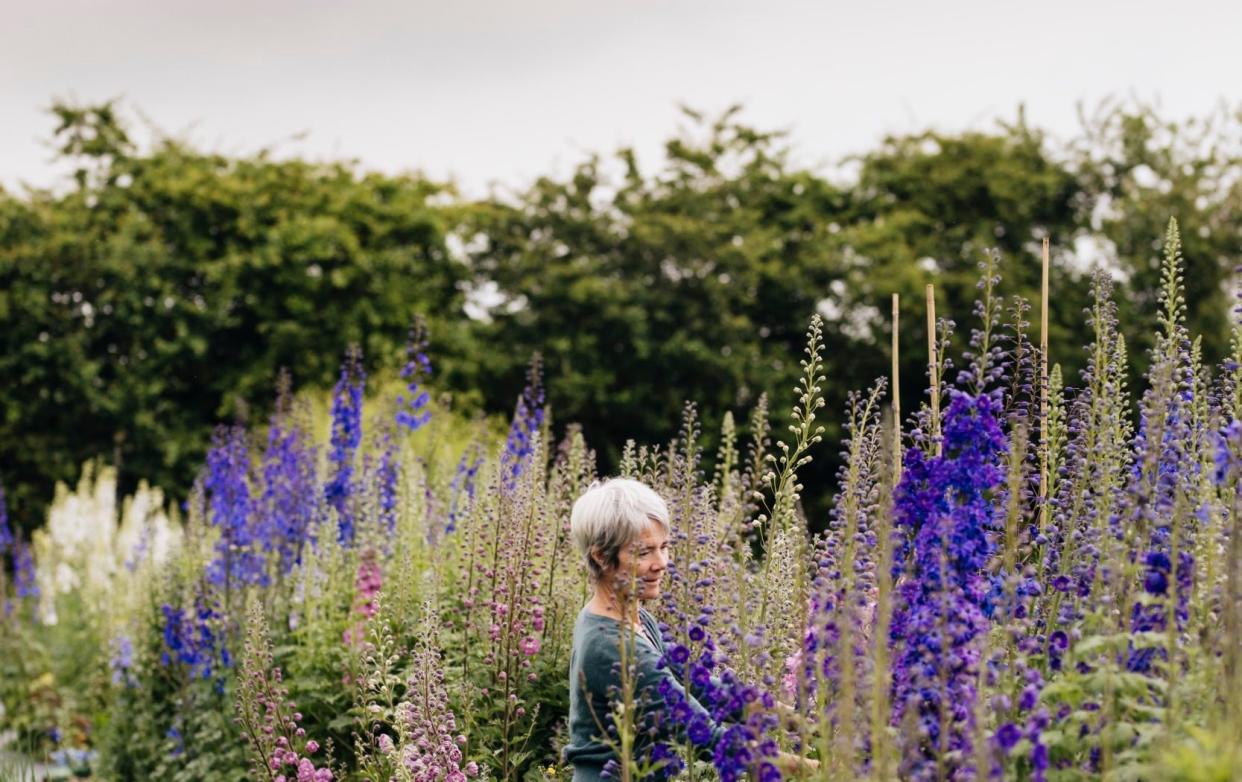
At this time of year, as the days lengthen and the temperatures start (please God) to creep up, the lure of planting thousands of annuals from seed is strong. With irresistible sweet shop-style catalogues and endless social-media posts of carts tumbling over with bucketloads of summer blooms, a patch full of breezy annuals feels like a quick, fast-growing floral fix.
For the novice, though, or the slightly unfocussed and disorganised grower, this initial excitement can soon turn to disappointment, if any one part of this process – or the weather – does not go according to plan.
But there’s an easier and more sustainable way to ensure you have material to cut year round: a cutting patch of perennial plants will reward you year after year with vasefuls of flowers and foliage. Perennial plants, shrubs and trees tend to be tougher, too, withstanding erratic temperatures or rainfall more readily than annuals. And they require far less maintenance – an annual mulch and prune is all most of these plants need to flourish.
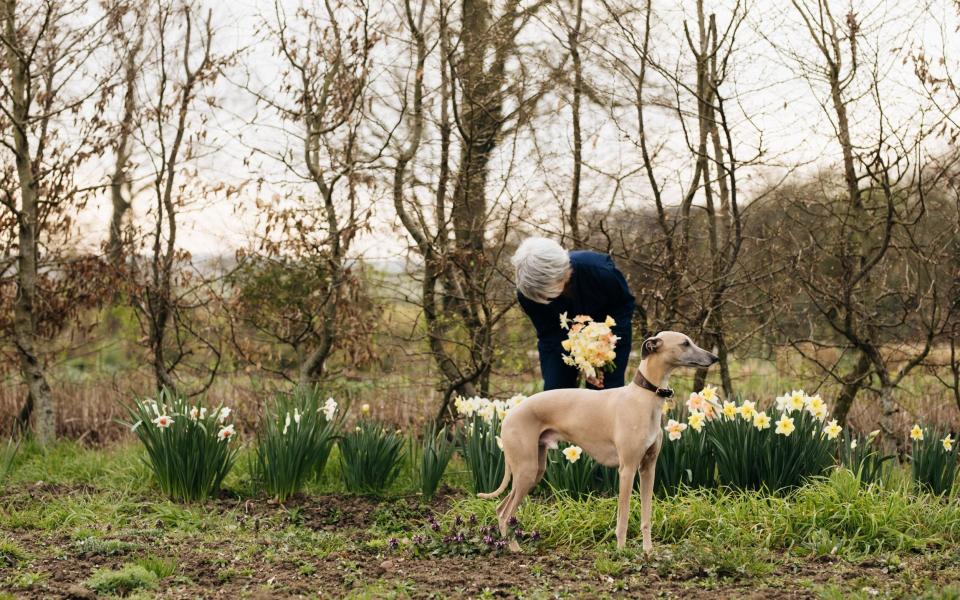
One convert is Rachel Siegfried, author of The Cut Flower Sourcebook: Exceptional Perennials & Woody Plants for Cutting (£35, Filbert Press, from March 23). Not long after she launched Green & Gorgeous, a four-acre flower farm and floral design studio in Oxfordshire, in 2008, she started to note how much more useful, resilient and hard-working her perennial plants were. They had a lighter environmental impact, too; unlike the annuals, they did not require the huge investment of time and resources, but crucially they could often tough out wet or dry conditions.
“By 2018, things had got to the point where it was getting too difficult to rely on annuals as much,” says Siegfried, whose main business from April until October is growing cut flowers for weddings. She also sells her flowers from her farm shop.
During one particularly cool and sodden summer she lost entire crops of annual flowers. “I was finding that the perennials were always the ones that were saving the day for me and I realised that I had to change the way I do things.”
Siegfried began her career in horticulture, designing therapeutic gardens at NHS hospitals around Oxfordshire. At the same time she studied garden design at Pershore College in Worcestershire, where Chris Beardshaw was then a tutor, and he fuelled her passion for plants. Wanting a more hands-on role, she then took a job on a private estate in the Cotswolds, running a beautiful Victorian walled garden for six years, where part of her job was to take bucket-loads of flowers and arrange them for the house.
“I wasn’t a florist, I didn’t have any training,” says Siegfried, who had free rein to forage around the estate and incorporated wild foliage, fruit and flowers into her arrangements. “I got quite creative. I absolutely loved it. I mean, who wouldn’t? And that’s when I started to see the potential for local and sustainable flowers.”
Back then there was much talk about the slow food movement, but nothing comparable in the flower world. By the time she set up Green & Gorgeous, the seeds were already sown for an exuberant, seasonal and naturalistic style. And the use of perennial material, that so closely reflects the seasons, is central to it.
Right now, in early spring, a typical arrangement could begin with a framework of emerging cherry plum blossom, branches of Amelanchier lamarckii with its pale star-shaped flowers and delicate coppery leaves, or branches of pussy willow that is cut and then dried to preserve its velvety catkins (with its vigorous growth, it’s also a contender for a wind-breaking cutting hedge).
She will then add winter hellebores, which have formed their seed pods (they won’t flop at this stage of their lifecycle), and the beautiful nodding Fritillaria uva-vulpis (forced in pots for an earlier harvest), with narcissi and some flamboyant early tulips as focal flowers. “It’s my favourite time of year, maybe because we’ve waited all winter and it’s just such a relief to have flowers,” says Siegfried. “You appreciate them more deeply. There’s not as much range, but what there is is exquisitely beautiful.”
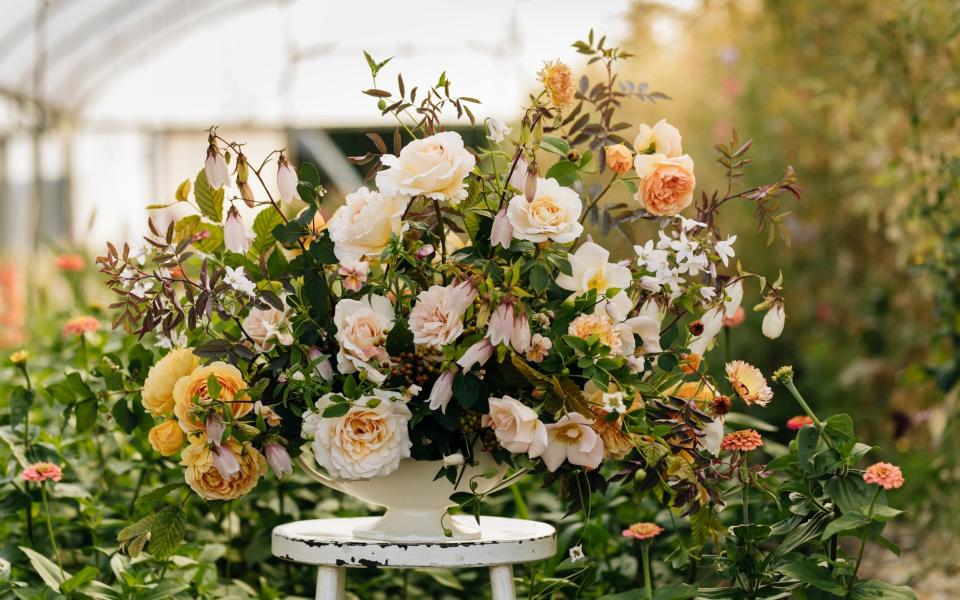
It’s this sense of seasonality that is at the heart of Siegfried’s book, which is an intensely practical guide to what and how to grow to provide cutting material year round. The first half of the book details her philosophy and process, with arrangements through each season, while the second half is a guide to her favourite perennial plants, from bulbs and herbaceous perennials though to climbers, grasses, trees and shrubs. While she writes from a commercial standpoint, all the advice works just as effectively for domestic gardeners too.
She started the book in 2020, but since then, the discussion around the environmental impacts of the cut-flower industry has significantly increased; the carbon footprint of imported flowers includes heating, electricity, packaging, transportation and refrigeration, but environmentally, these flowers also come with a heavy chemical cost too, with fertilisers, pesticides and preservatives often used through their growing process.
In 2018, Rebecca Swinn, a student at Lancaster University, carried out postgraduate research on this unseen impact and found that a commercially grown British bouquet would have just 10 per cent of the carbon footprint of imported flowers.
A local outdoor-grown bouquet would halve that figure again to around 5 per cent. But of course, there is nothing more local and sustainable than growing your own flowers and foliage, with no chemicals necessary, just outside your own door. And then composting your own green waste, once you’ve enjoyed them in the house.
Many perennial plants and shrubs do take time to mature, but Siegfried believes that, as with the slow food movement, people need to adjust their mindset. “I think people do need to learn to be a little bit more patient and realise that not everything can be instantaneous,” she says. “When you’re a gardener, that becomes intrinsic. Waiting three years to be able to pick a peony is not really a big deal.”
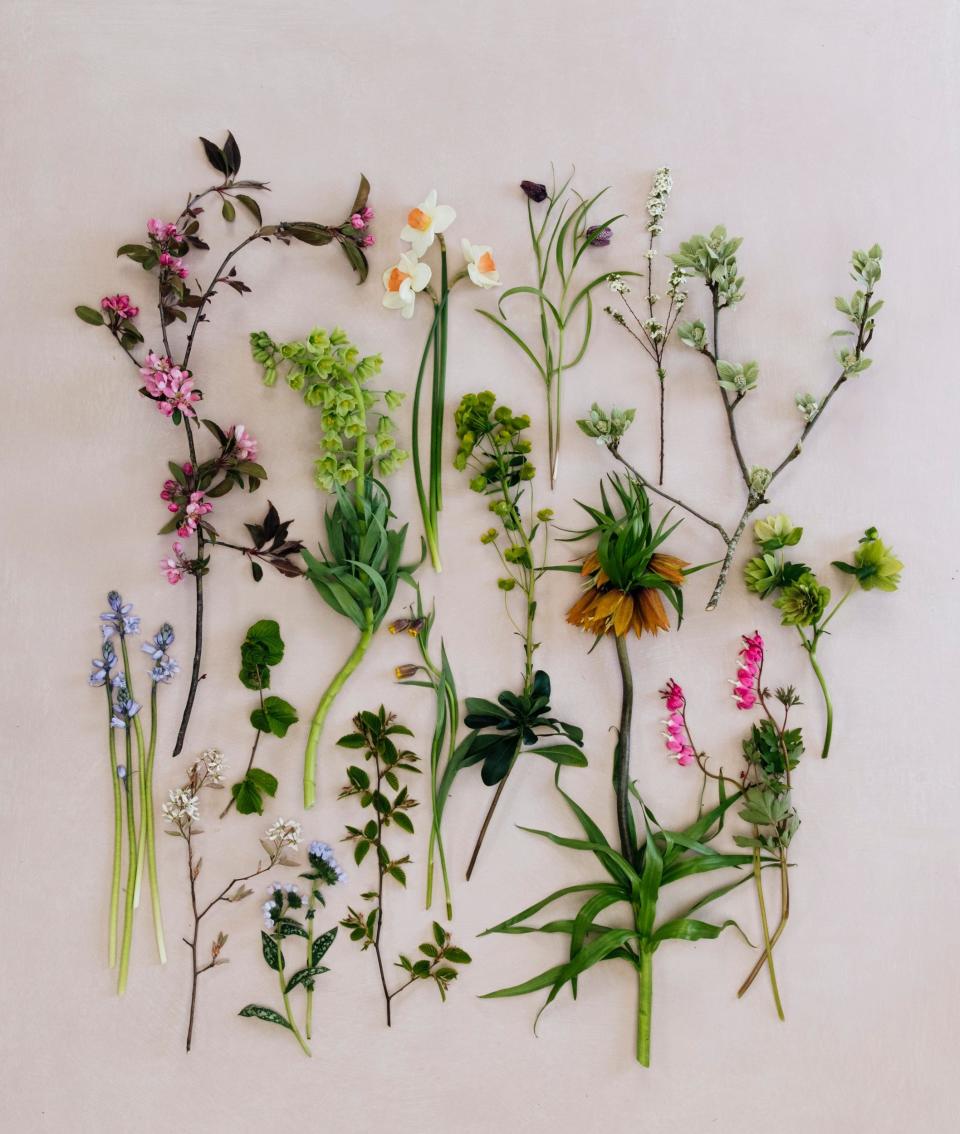
She’s equally quick to point to all the perennial plants that will reward you in their first season, too – rudbeckias, achilleas, catananche, agastache, echinacea, gaura, the list goes on.
Her advice to anyone starting out is to get anything that will take time to mature – woody plants, trees, shrubs, climbers – planted first. If you need to create any boundaries in your garden, then creating a cutting hedge will do double-duty, providing foliage, flowers and fruits too – hawthorn, viburnum, euonymus, beech and hornbeam are all useful for cutting in different stages of their growth.
Her other key advice is to treat these plants like a crop and keep them separate from your borders, for ease of maintenance and cutting, but also because, even with the very best intentions, you are unlikely to cut material from a beautiful border.
The other key benefit for Siegfried of using perennials and woody plants for cutting is the unique material that you’d never find commercially. The first emerging lime-green leaves on spring branches, the twisted graceful stems of fruit tree branches from bud to full flower, the winding growth of vines and climbers that bring incredible movement to a vase. All of these are in complete contrast to the straight stems that are sold commercially for ease of shipping.
Having access to these plants in your own garden also allows you to use a plant at all stages of its life, not just for the prized blooms in one moment. Long before they flower, stalwarts such as Alchemilla mollis, Anthriscus sylvestris ‘Ravenswing’, Thalictrum ‘Elin’ all produce exquisite foliage.
Similarly, after flowering, many perennials are still prized for their autumn fruits (Blackthorn’s sloes, crabapple varieties, Berberis gagnepainii ‘Georgeii’ with its clusters of coral berries), seedheads (including Baptisia australis, crocosmia or Dierama pulcherrimum), and autumn colour (Euphorbia schillingii and Amsonia hubrichtii both have fiery autumn foliage).
What all these plants share is a soulful beauty, and with very little effort or cost (both financially and environmentally), they will flourish, bulk up and return each year. Garden gifts that really do keep on giving.
Top 10 trees and shrubs for cutting
Hazel
Corylus avellana

The beautiful yellow catkins that form on bare branches through winter make this an indispensable plant. Use it as a framework with forced paperwhites and then later with spring bulbs, such as narcissi.
Magnolia
Magnolia x soulangeana

Once they unfurl their huge velvet pink flowers in spring, a couple of magnolia branches arranged in a small bowl using a Japanese kenzan (flower frog) need no embellishment.
Snowy mespilus
Amelanchier lamarckii

Can be grown as a small tree, shrub or hedge and flowers early in spring with star-shaped white blooms and the most beautiful emerging copper foliage. Cut when the flowers are still in bud.
Physocarpus opulifolius ‘Diabolo’
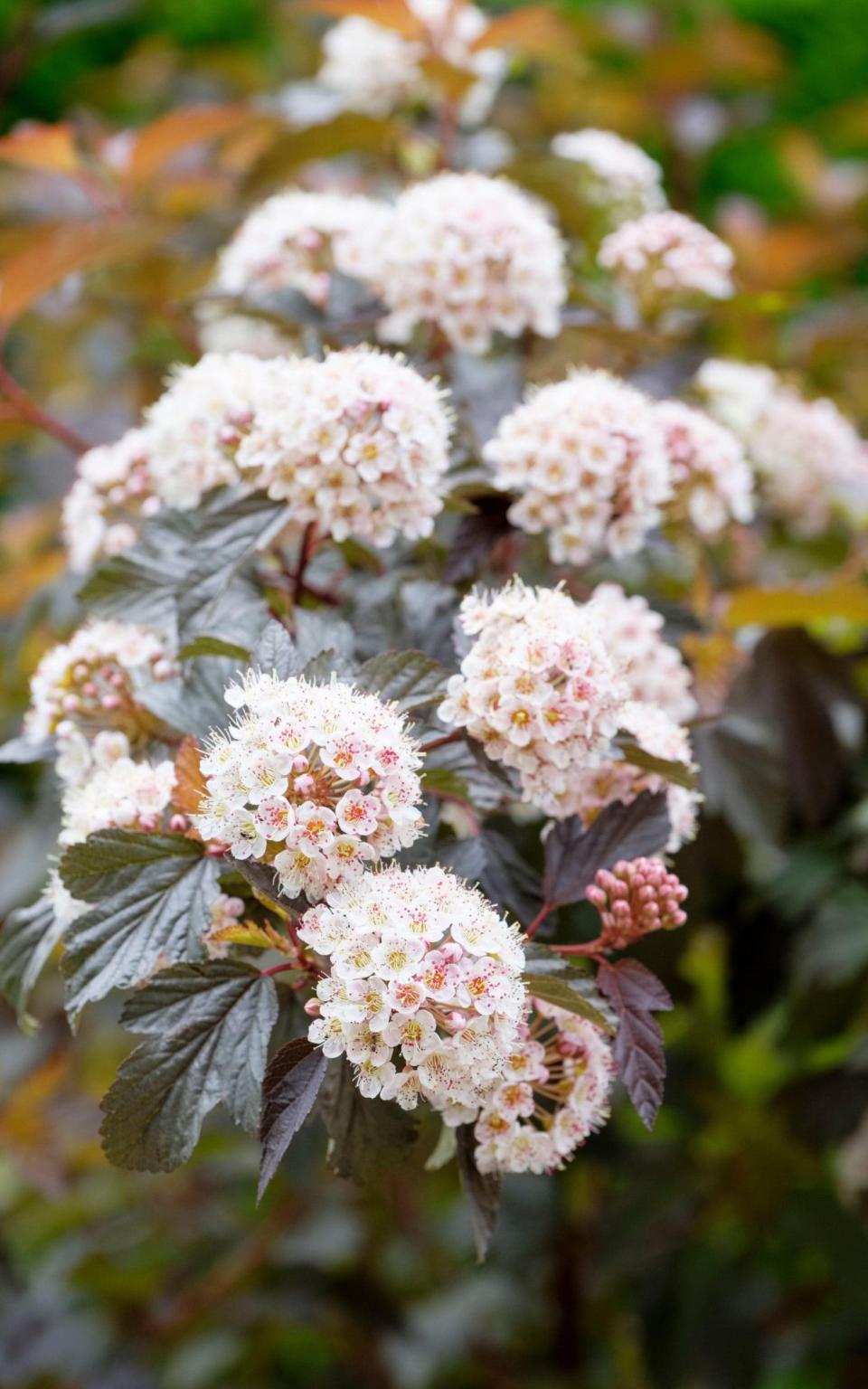
An invaluable shrub with beautiful emerging bronze leaves in spring, followed by pretty white flowers and deep burgundy foliage. The older, woodier stems last longer in a vase.
Flowering currant
Ribes sanguineum
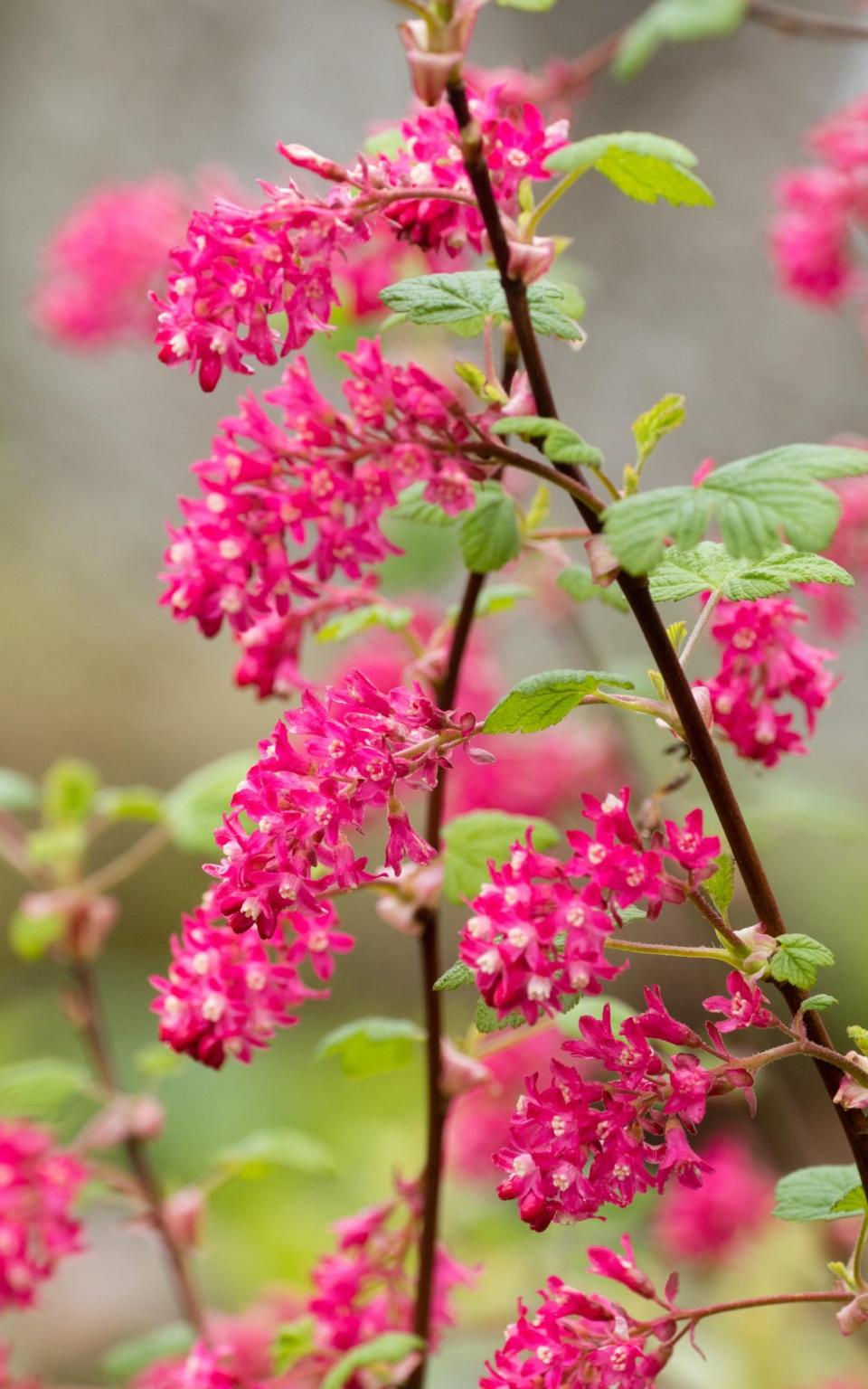
These currant bushes have pretty, pendulous flowers in white or pink in early spring, followed by scented palmate leaves and exquisite golden autumn leaf colour.
Guelder rose
Viburnum opulus
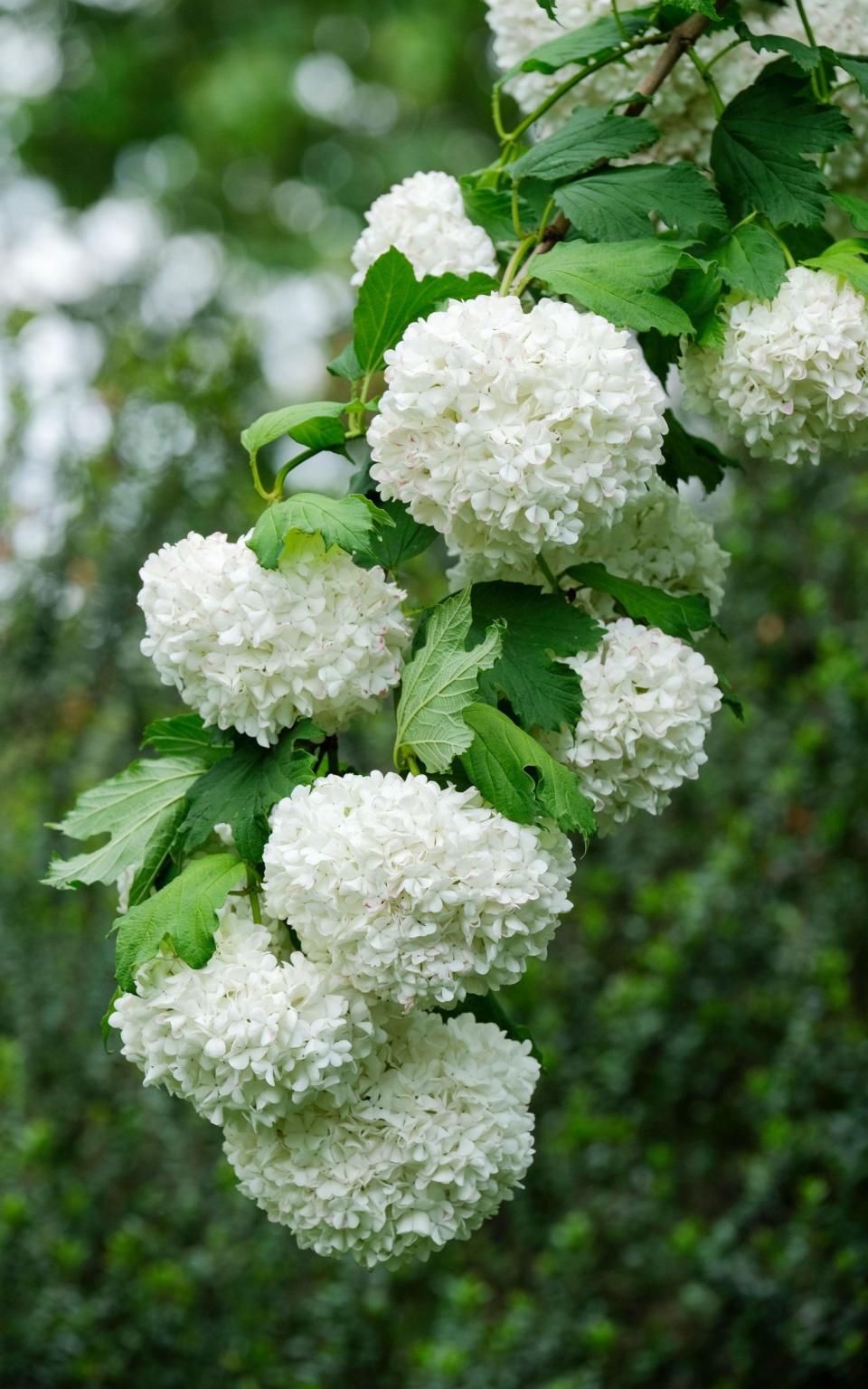
A useful, fast-growing shrub or tree, with flowers in spring and lush autumn fruits that can be picked from late summer. ‘Roseum’ has lime-green pom-pom flowers which look wonderful in an arrangement.
Spirea thunbergii
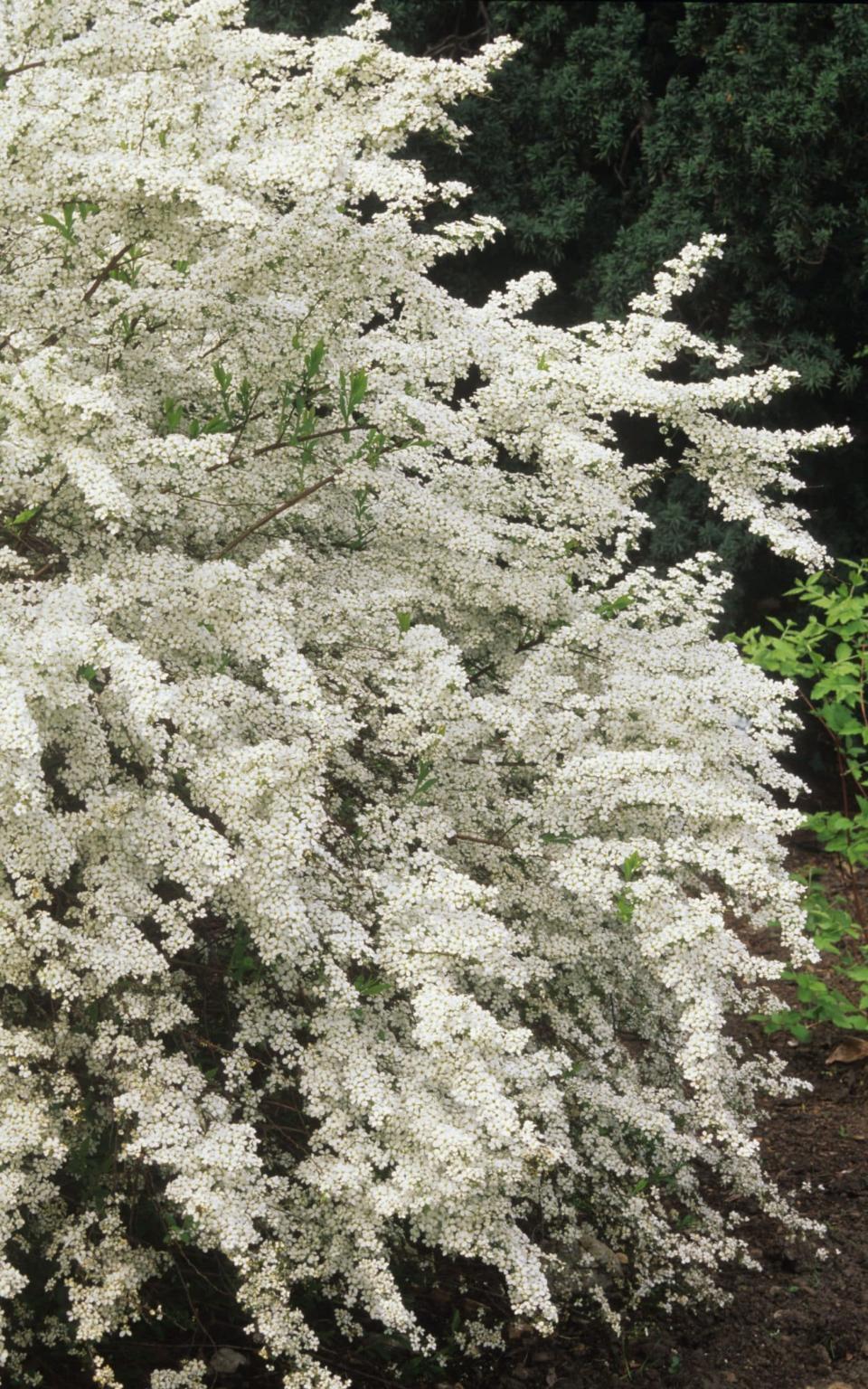
A florist’s stalwart plant with fine arching stems covered in delicate white flowers in spring, followed by feathery foliage in summer, which turns into fiery shades in autumn.
Smoke tree
Cotinus coggygria

Another vigorous, large shrub or tree prized for its hazy, delicate flower heads. ‘Grace’ has deep amber flowers and foliage, while ‘Flame’ has green leaves and dusty pink flowers.
Mock orange
Philadelphus ‘Belle Etoile’ or ‘Enchantment’
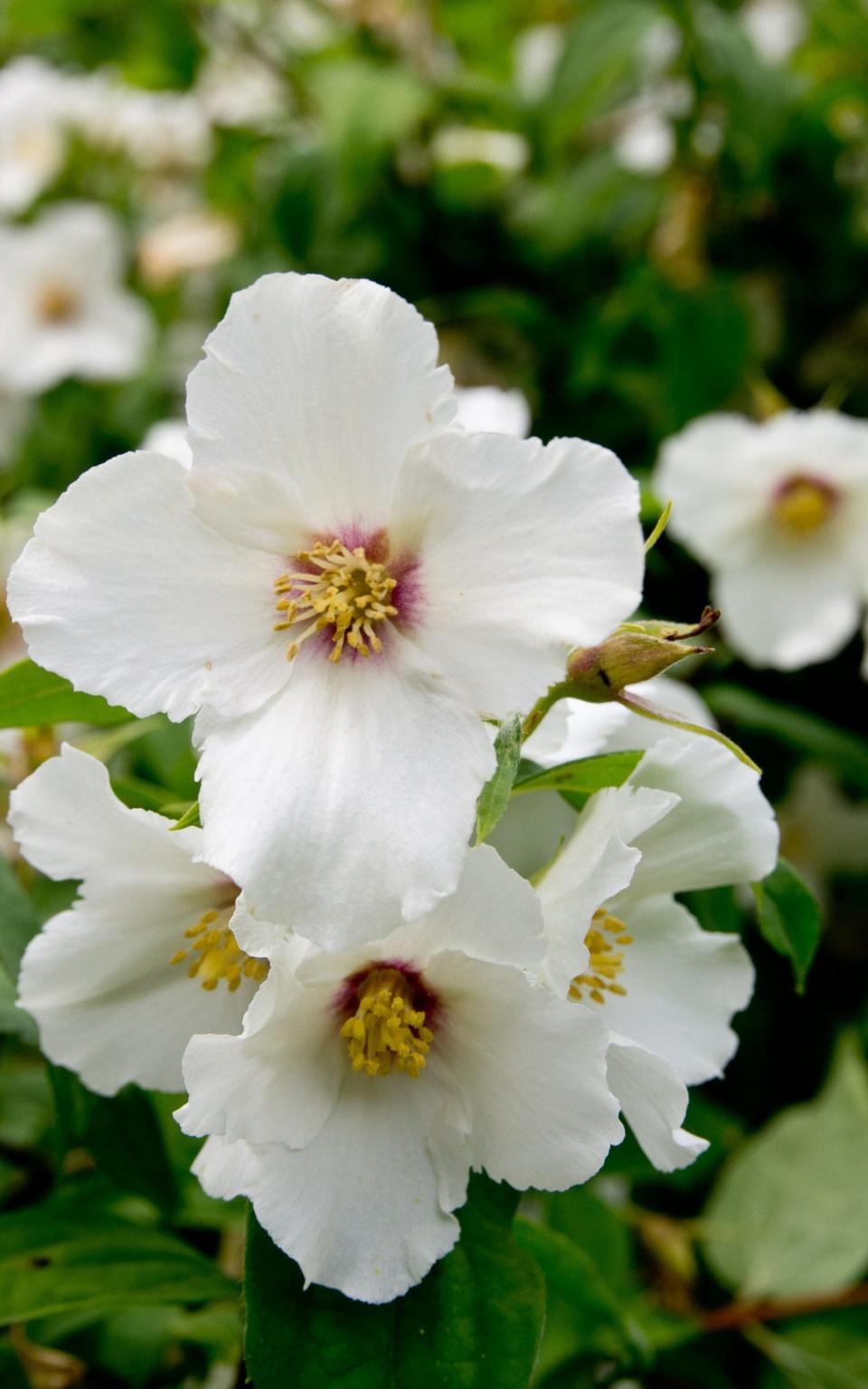
Unlike many of the plants here, the gloriously scented mock orange has just one moment in midsummer, but its delicate flowers are a perfect backdrop to blowsier blooms.
Rubus idaeus ‘All Gold’
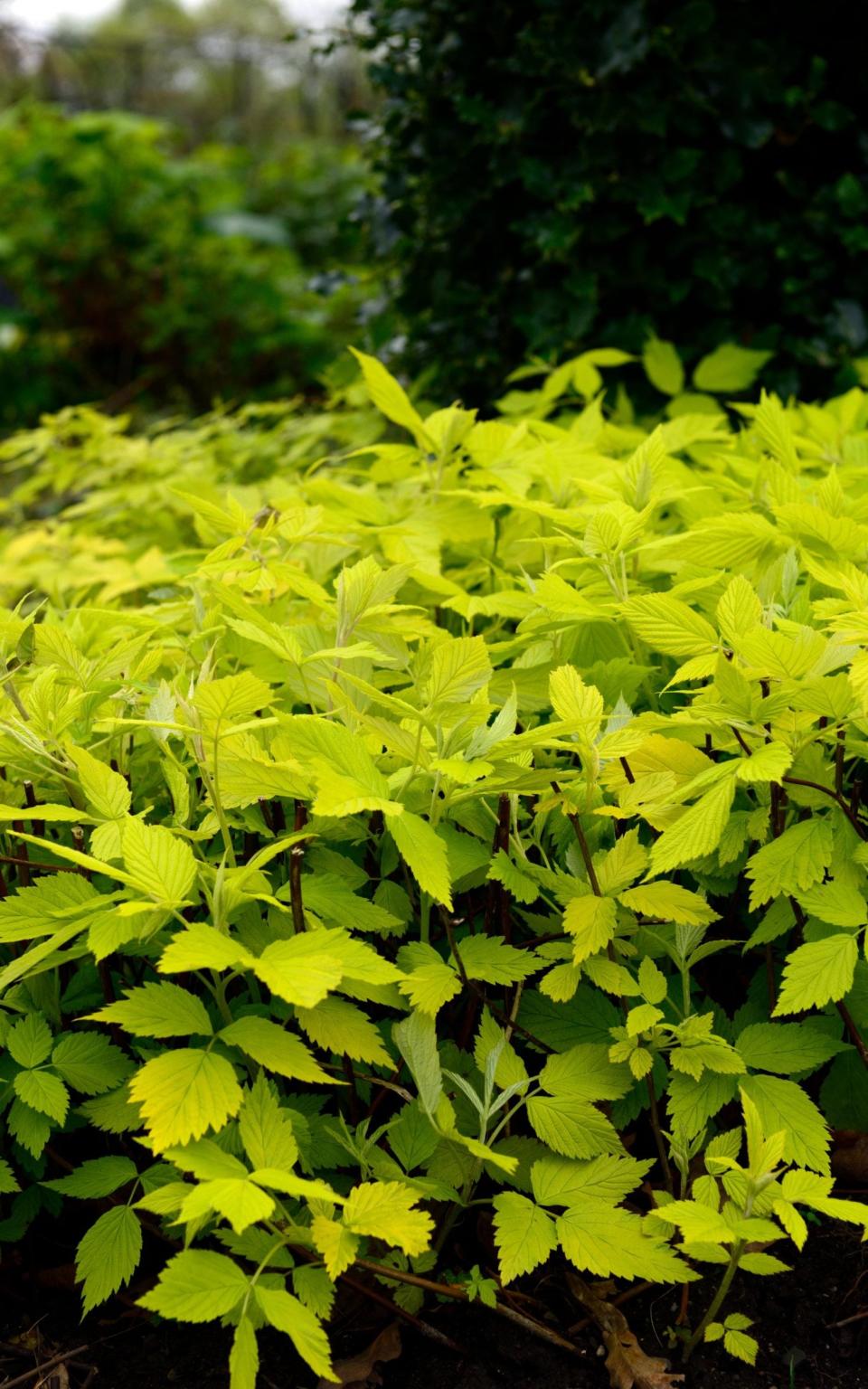
This autumn-fruiting raspberry has a long fruiting season from late summer to early autumn and has wonderful textural foliage, as well as stunning golden fruits that look lush in autumn arrangements.


